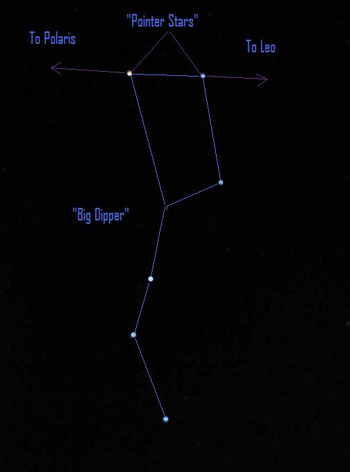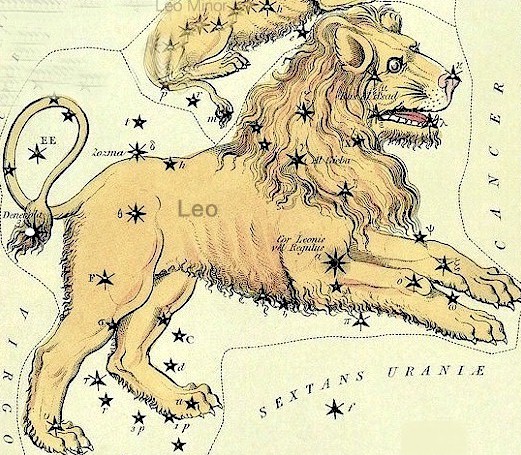These next two nights – December 25 and 26, 2018 – you might see the moon and Regulus, the Royal Star, coming up above your eastern horizon before your bedtime. If not, you can always get up before daybreak to view the waning gibbous moon and Regulus much higher up in the sky.
Want to know when the moon and Regulus rise into your sky? Then Click here for the moon’s rising time (remember to check the Moonrise and moonset box). An app such as Stellarium can help you find out the rising time for Regulus.
EarthSky lunar calendars are cool! They make great gifts. Order now. Going fast!
Regulus, the brightest star in the constellation Leo the Lion, is the only 1st-magnitude star to sit almost squarely on the ecliptic – the sun’s apparent annual path in front of the constellations of the zodiac. Of course, the sun’s apparent motion in front of the background stars is really a reflection of the Earth revolving around the sun.

Regulus is considered to be the most important of the four Royal Stars of ancient Persia. Possibly, Regulus’ proximity with the ecliptic elevated this star’s status.
These Royal Stars mark the four quadrants of the heavens. They are Regulus, Antares, Fomalhaut, and Aldebaran.
Four to five thousand years ago, the Royal Stars defined the approximate positions of equinoxes and solstices in the sky. Regulus reigned as the summer solstice star, Antares as the autumn equinox star, Fomalhaut as the winter solstice star, and Aldebaran as the spring equinox star. Regulus is often portrayed as the most significant Royal Star, possibly because it symbolized the height and glory of the summer solstice sun. Although the Royal Stars as seasonal signposts change over the long course of time, they still mark the four quadrants of the heavens.

Regulus coincided with the summer solstice point some 4,300 years ago. In our time, the sun has its annual conjunction with Regulus on or near August 23, or about two months after the summer solstice – or alternatively, one month before the autumn equinox. Regulus will mark the autumn equinox point some 2,100 years in the future.

Bottom line: These next few nights, use the waning gibbous moon to locate Regulus, the Royal Star!











